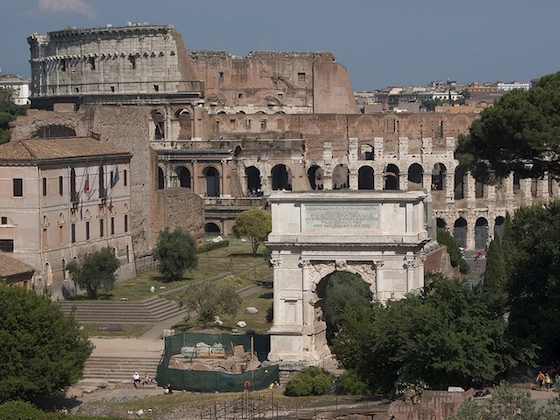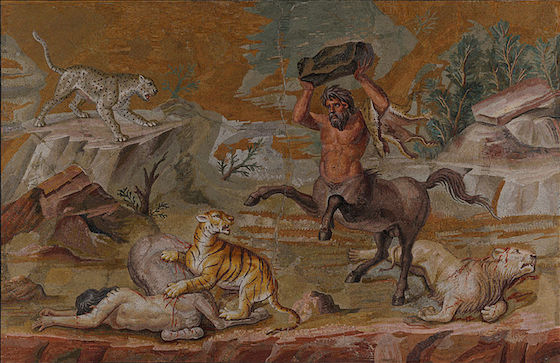Roman Art: When and Where
Greek art certainly had a powerful influence on Roman practice; the Roman poet Horace famously said that “Greece, the captive, took her savage victor captive,” meaning that Rome (though it conquered Greece) adapted much of Greece’s cultural and artistic heritage (as well as importing many of its most famous works). It is also true that many Romans commissioned versions of famous Greek works from earlier centuries; this is why we often have marble versions of lost Greek bronzes such as the Doryphoros by Polykleitos.
Republican Rome
In the Republican period, art was produced in the service of the state, depicting public sacrifices or celebrating victorious military campaigns (like the Monument of Aemilius Paullus at Delphi). Portraiture extolled the communal goals of the Republic; hard work, age, wisdom, being a community leader and soldier. Patrons chose to have themselves represented with balding heads, large noses, and extra wrinkles, demonstrating that they had spent their lives working for the Republic as model citizens, flaunting their acquired wisdom with each furrow of the brow. We now call this portrait style veristic, referring to the hyper-naturalistic features that emphasize every flaw, creating portraits of individuals with personality and essence.
Imperial Rome
Augustan (27 B.C.E.-14 C.E.)
Julio-Claudian (14-68 C.E.)
Flavian (69-98 C.E.)
Trajanic (98-117 C.E.)
Hadrianic (117-138 C.E.)
Antonine (138-193 C.E.)
Severan (193-235 C.E.)
Soldier Emperor (235-284 C.E.)
Tetrarchic (284-312 C.E.)
Constantinian (307-337 C.E.)
Who Made Roman Art?
What did they make?
Candela Citations
- Introduction to Ancient Roman Art. Authored by: Dr. Jessica Leay Ambler. Provided by: Khan ACADEMY. Located at: https://www.khanacademy.org/humanities/ancient-art-civilizations/roman/beginners-guide-rome/a/introduction-to-ancient-roman-art. Project: Introduction to Ancient Roman Art. License: CC BY-NC-SA: Attribution-NonCommercial-ShareAlike











